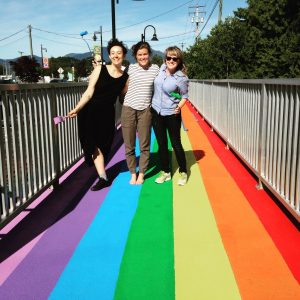Now that my time here with SD 52 is coming to a close and I have had the opportunity to visit more schools, I have noticed some similarity in many of the classrooms. Many of the classrooms do not have desks! Instead, the class is set up with large tables and the students supplies are in bins around the room or in the middle of the desks. Now, I did not visit every elementary classroom, but the majority of the primary classes I saw were set up this way. One teacher even had students choose different places to sit throughout the day. I can see the appeal of setting your classroom up this way. There is increased mobility, flexibility, and all of these transitions would be more fluid. Setting classes up this way also increases more choice and autonomy at an earlier age. Students are more readily able to explore different working environments. They can easily choose to work with a group, in partners, or individually. I would very much like to explore this set up one day when I have my own classroom as it is quite different from my own teaching experience thus far.
One of the most unique places I went was the Sensory Room. I had never heard of a room with this purpose before. It creates opportunities for students who have varying abilities and challenges to explore different physical environments and to challenge themselves with respect to both problem solving and their fine and gross motor skills. Perhaps what was the most interesting is the different types of support needed within the room. Some students needed to imagine that the room was a “Minecraft” obstacle course in order to engage with the room, others dived right in without any prompting. The Sensory Room is an adapted learning environment for students who need it, but is then further adapted to the needs of individuals as well.
themselves with respect to both problem solving and their fine and gross motor skills. Perhaps what was the most interesting is the different types of support needed within the room. Some students needed to imagine that the room was a “Minecraft” obstacle course in order to engage with the room, others dived right in without any prompting. The Sensory Room is an adapted learning environment for students who need it, but is then further adapted to the needs of individuals as well.
Another highlight from our time here was assisting during the National Aboriginal Day Celebrations. Unfortunately, the weather pushed us inside, but it was still an exciting day nonetheless! We helped run a complimentary coffee and snack station, which gave us opportunities to interact with members of the community. We were lucky to be able to take breaks and view some of the performances. The student drumming was my favourite. It was wonderful to see students performing with such pride and enthusiasm. We also had the pleasure to meet some of the Role Model students. This is a great program for all students to be inspired from. Seeing people who have been in your shoes and gone on to find success can be very inspiring and motivating. Events such as these, can greatly impact a community by helping to foster pride and belonging in a safe and positive environment – there is a place for everyone.
Well, that is all for now! Thank you Prince Rupert for letting us choose our own adventures and for making us feel so welcome! Hopefully we will see you again soon.

